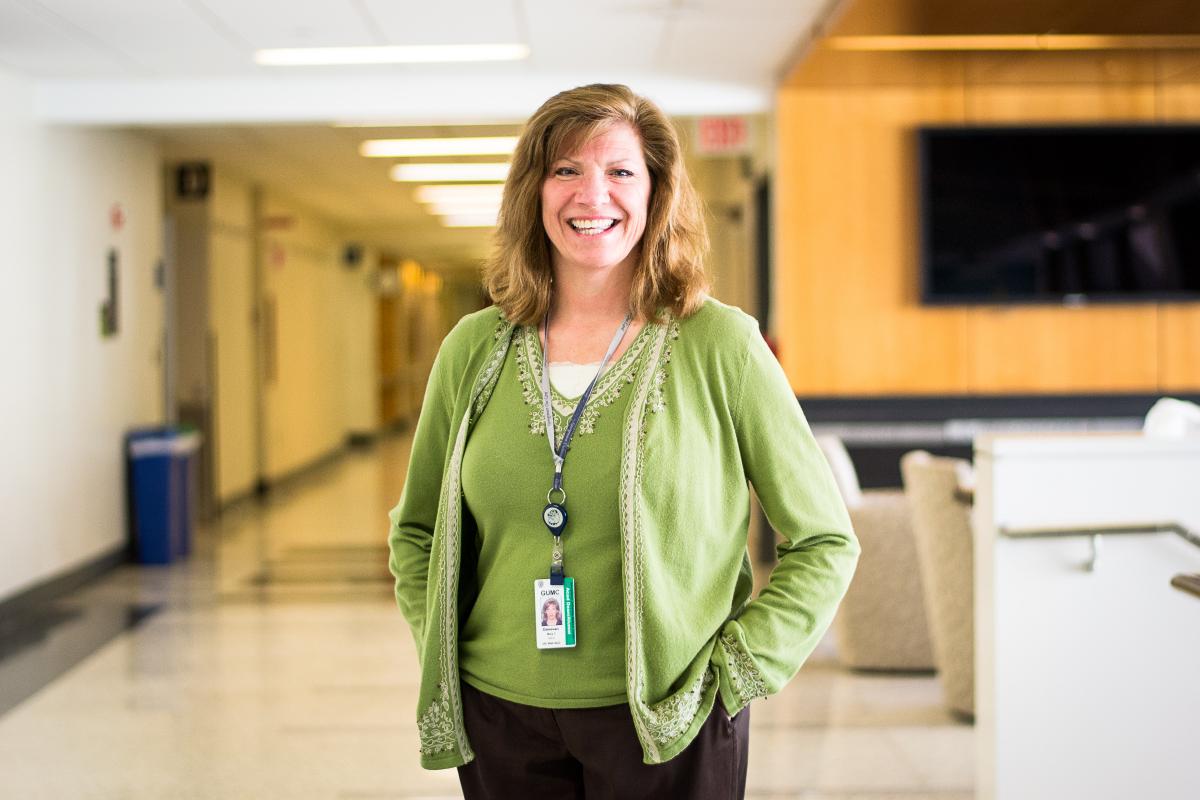Mary Donovan
Standardized Patient Educator, Integrated Learning Center

What are three ways that you promote ongoing engagement and consultation at GUMC?
I serve as staff on the GUMC Interprofessional Education Working Group, which seeks and implements opportunities for students across campus – in nursing, health administration and medicine – to learn with each other, as well as from each other. At our recent IPE Experience workshop, 350 participants engaged in an interactive program focusing on health disparities and implicit bias. Nursing and medical students also work together to provide flu-shot clinics, and we are working toward additional projects such as shared service-learning.
As a School of Medicine standardized-patient educator, I provide ongoing consultation to the School of Nursing & Health Studies regarding their clinical skills activities and exams with Standardized Patients. I implemented campus-based OSCEs and helped develop their online degree programs’ clinical skills activities from fall 2008 to present. I provide continuing advice about patient-case development, programmatic options, budget considerations and resources.
I consult on opportunities for amplifying student practice and feedback on patient communication and interpersonal skills through new and continuing programs such as evening workshops with faculty and campus facilitators.
Why is the principle of building ongoing engagement and consultation so essential to the work you do every day?
Building bridges through engagement and consultation is essential for several reasons. Healthcare for any population – or individual – involves a variety of professions working together at all levels, and we are all each other’s “customers.” In my capacity in the Office of Medical Education, I interact every day with students, faculty, staff, administrative support and Deans, each of whom brings a unique and meaningful perspective to our shared mission of preparing future healthcare providers. It takes a village, to be sure, and I learn from that village every day. And we are always modeling – whether we realize it or not – interpersonal behavior for our learners. The opportunity to model bridge-building behavior, such as I can, is a privilege.
What are some of your favorite things to do in or around the DC/MD/VA region?
I’m equally split as an introvert/extrovert on Myers-Briggs, so I recharge in solitude but also need to get out into the world. I love to swim laps and to hike in the DC area’s many green spaces to decompress. I also love the arts in all forms and go to Smithsonian lectures several times a year. My book club has been meeting monthly for 17 years now. And in warmer weather, it’s fun to have a little yard and watch salad ingredients grow.
